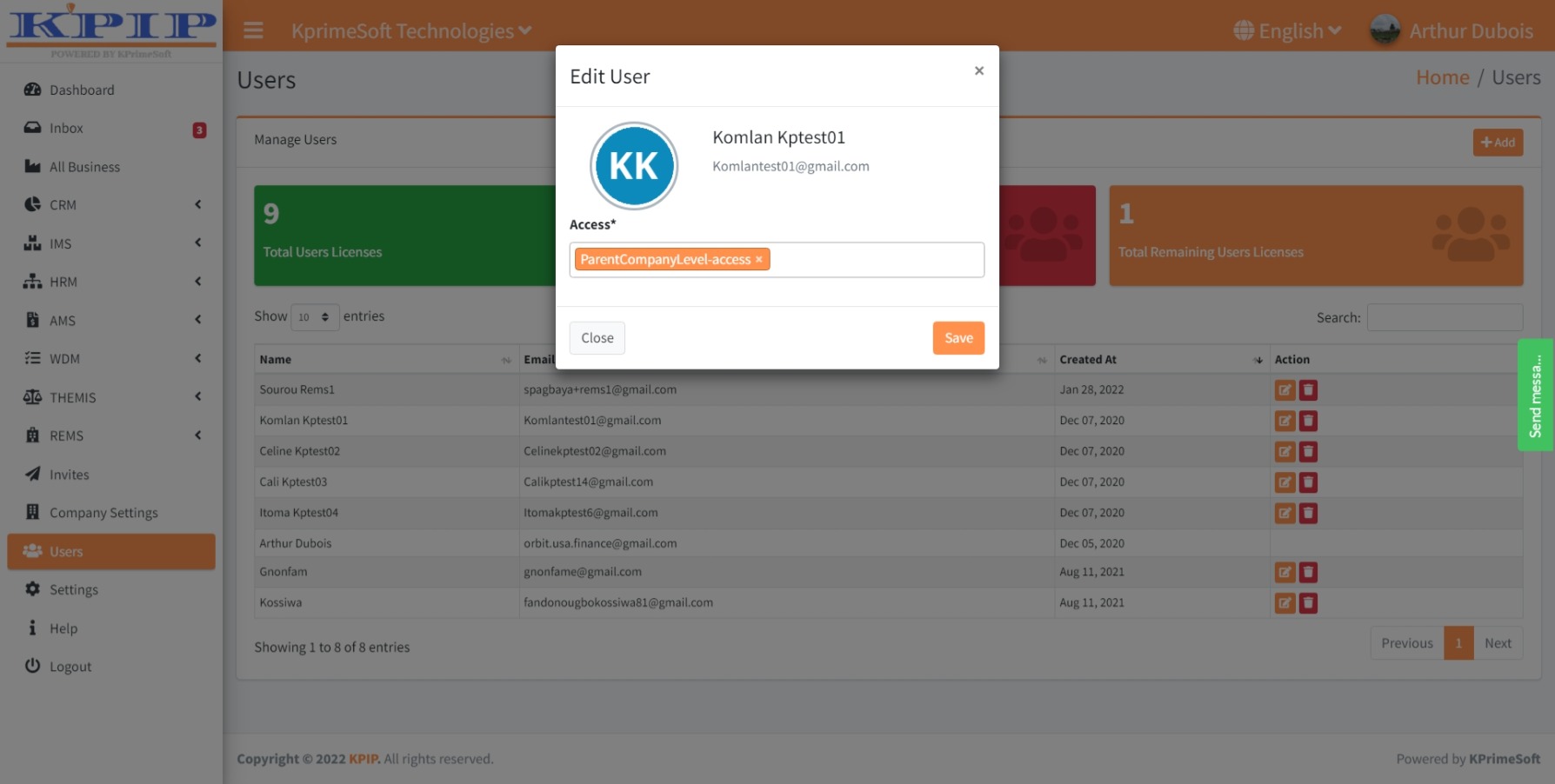KPIP ADMINISTRATOR ACCESS USER MANUAL
INTRODUCTION
KPrimeSoft Support
Last Update a year ago
The KPIP administrator is the person in charge of the settings to be made in KPIP, having to address all aspects of an organization or company to which they belong. They are also responsible for adding users of KPIP from their organization. To this end, they have a number of access rights, namely: the assignment of modules to their users, configuration of HRM-Payroll access, Add Expenses Transaction, View Bank Balance, View Cash-on-hand Balance, HRM-no-edit, All Clients Data Access, All Employee Data Access, Admin, and Parent Company Level access.
I - ASSIGNMENT OF MODULES AND ACCESS TO USERS
When you click on the "Users" feature, a new page will open displaying various information about licenses and registered users for the selected company. This includes the total number of available licenses, the number of used licenses, the remaining licenses, and a table listing all the registered KPIP users. In the "Action" section, you have the option to edit user information or delete a user.
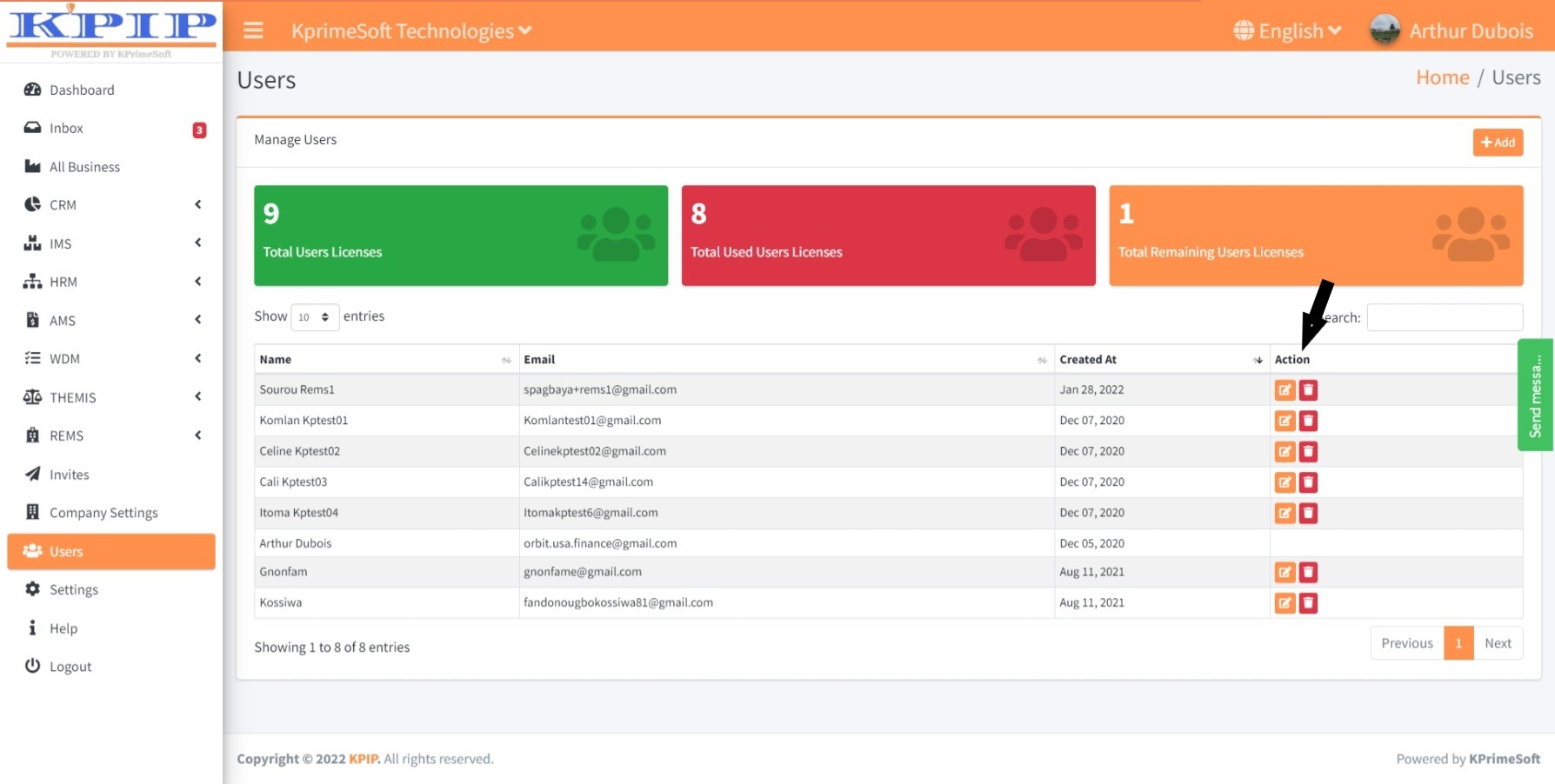
Utilize the "Show Entries" option to determine the number of users displayed per page. The "Search" option enables you to quickly find a user by entering their name.
To add a new user, click the "Add" button. Provide the user's email address and proceed by clicking the "Next" button on the subsequent page. On the following page, furnish the user's name, email address, and a temporary password that they will be prompted to change. Choose the module(s) you wish to assign to the user, along with the corresponding access level(s), and then finalize by clicking the "Save" button.
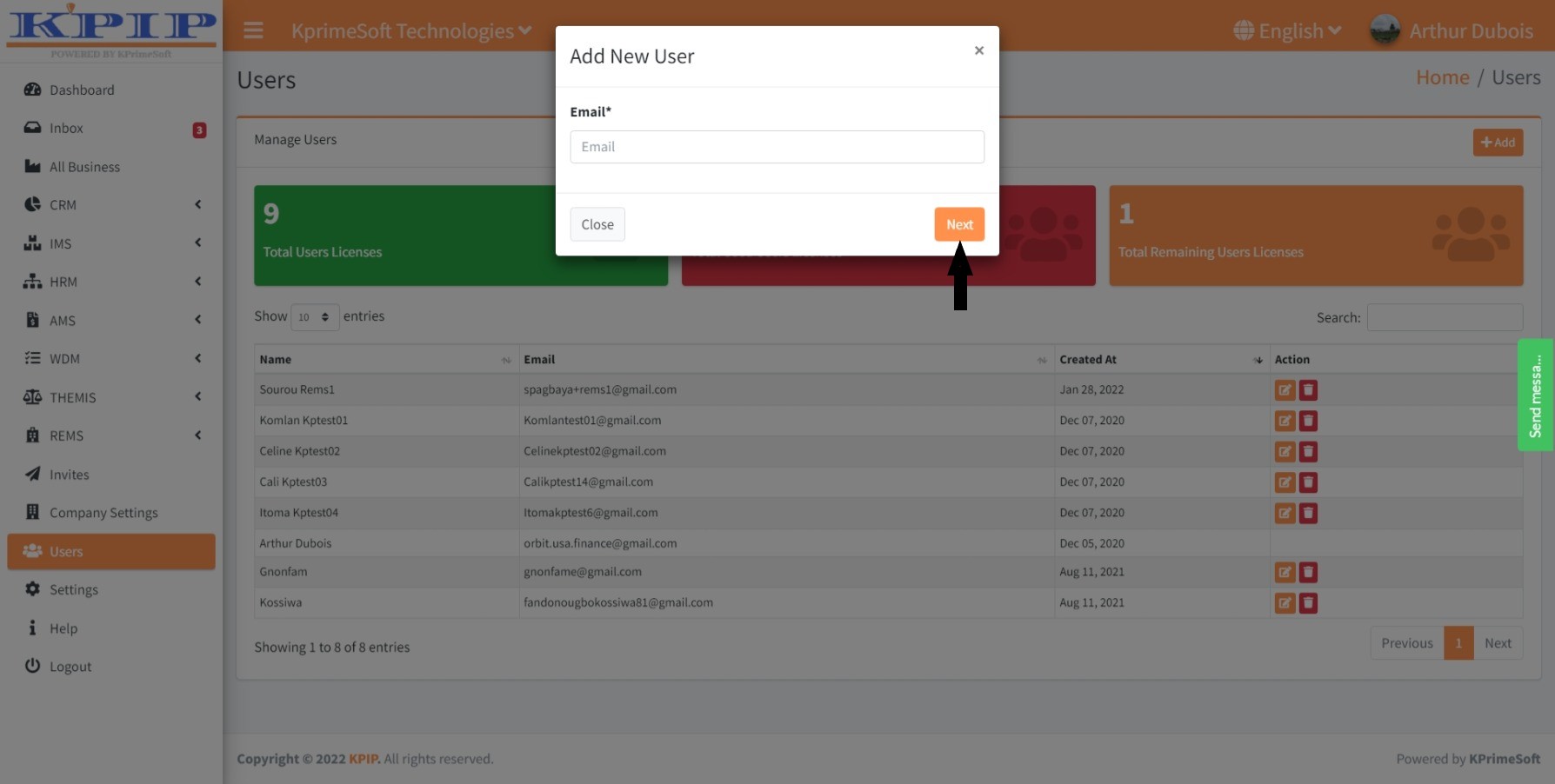
II - WITHDRAWAL OF MODULES OR ACCESS
If you wish to remove a module or access from a user, access the "Users" feature from the dashboard. Once on the new page, locate and select the user in question, then click the "Edit" button in the action section. On the ensuing page, you can remove a module or access by clicking the "x" icon associated with it. Confirm your changes by clicking the "Save" button.
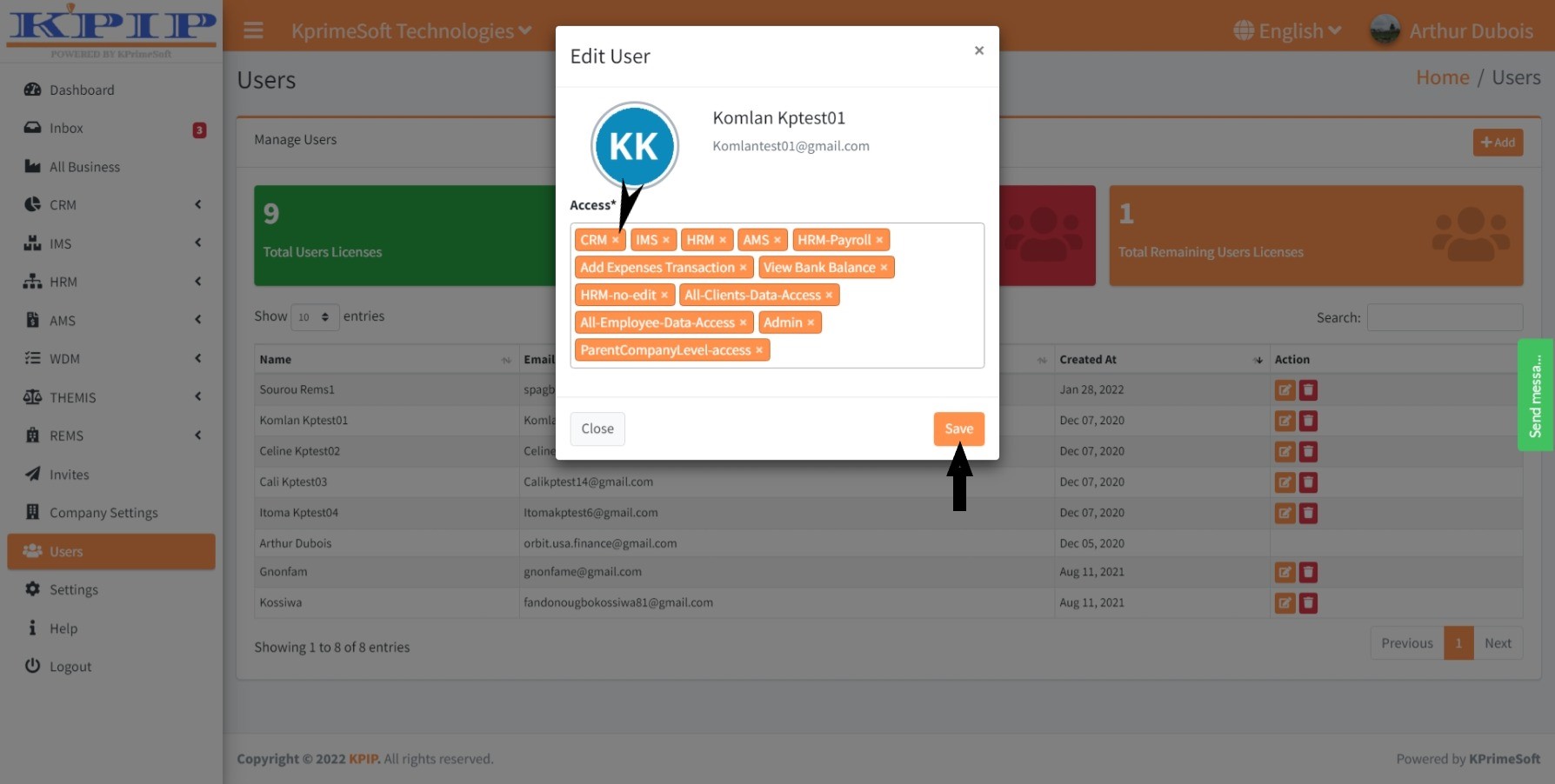
III - MODULES AND ACCESS FUNCTION
1 - Function of the modules
A- CRM
Client Relationship Management: The CRM module enables you to efficiently integrate your customer data within a secure environment. Your customer interactions and follow-ups are systematically categorized to pinpoint the most promising leads, thereby boosting sales. Moreover, the electronic signature functionality streamlines processes, optimizing both your customers' and staff's time, resulting in a more favorable return on investment.
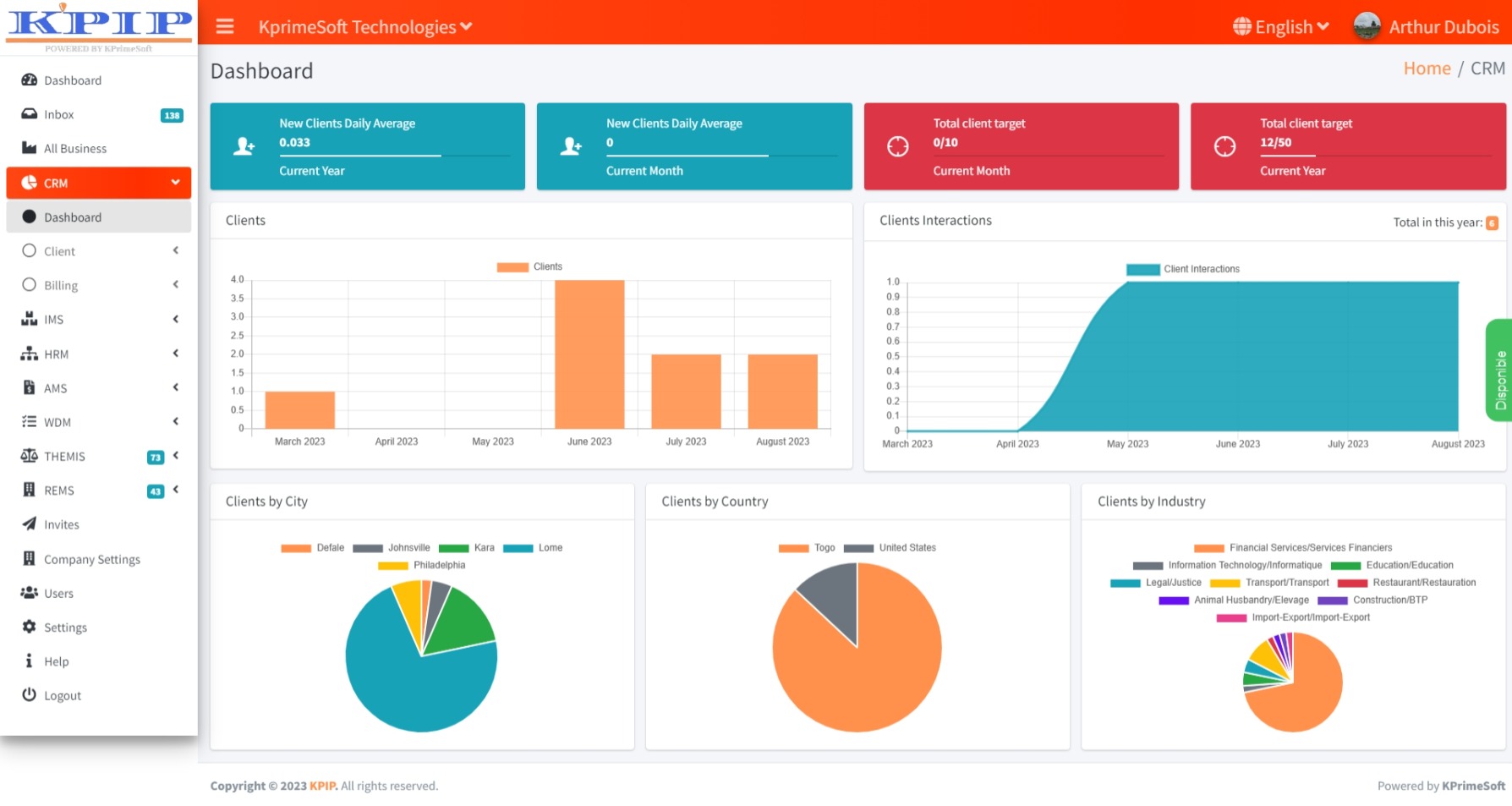
B- IMS
Inventory Control and Management: The IMS module empowers users to maintain meticulous control over their stock. Whether it's production or sales stock, you can closely monitor unit levels, proactively plan replenishment schedules, and avert any shortages that might undermine customer satisfaction and tarnish your reputation.
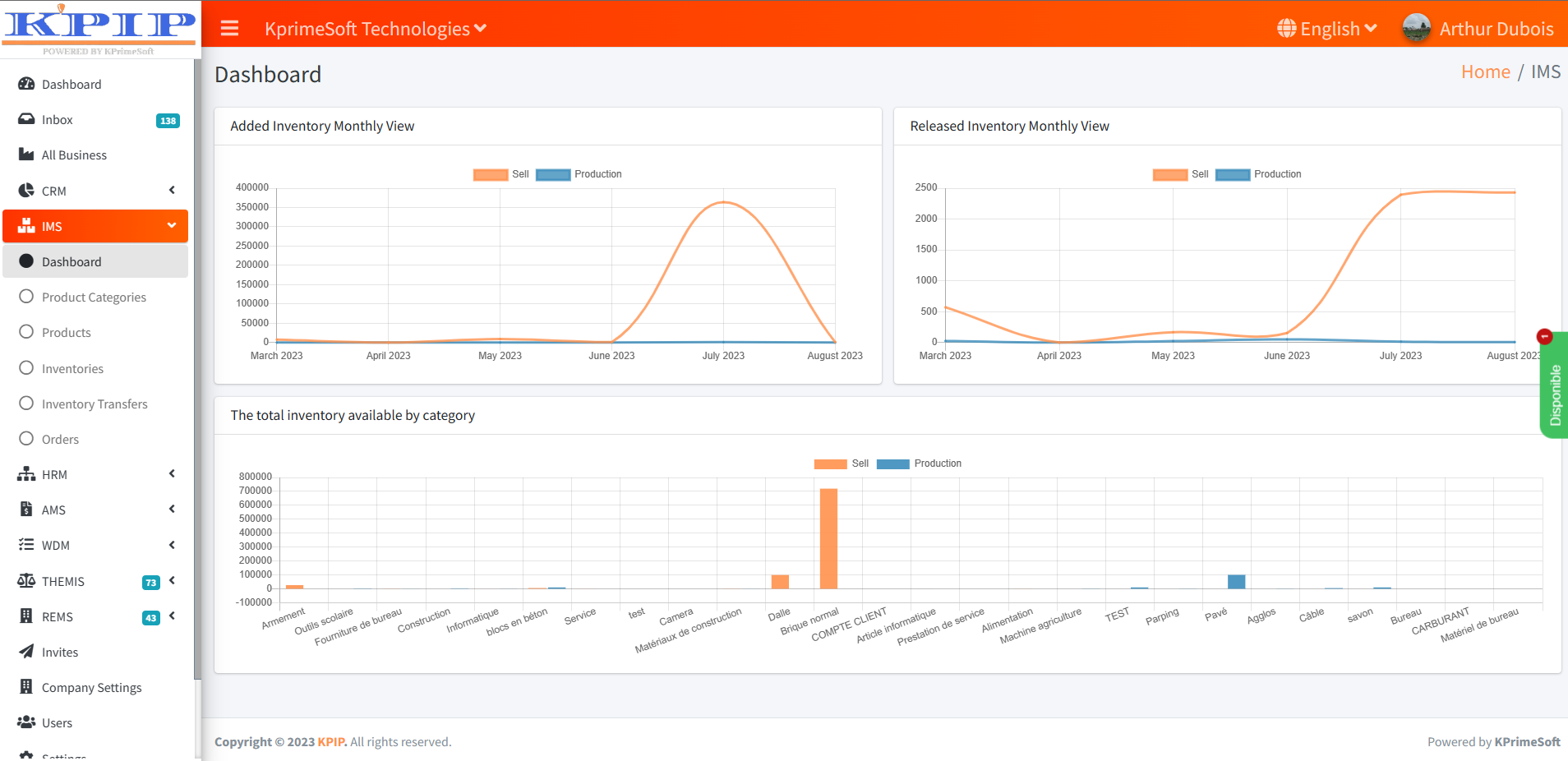
C- HRM
Human Resource Management: The HRM module allows you to effortlessly track timesheets, vacations, benefits, and employee payroll. This tool facilitates effective management and seamless communication with your staff, ultimately enhancing overall productivity within your organization.
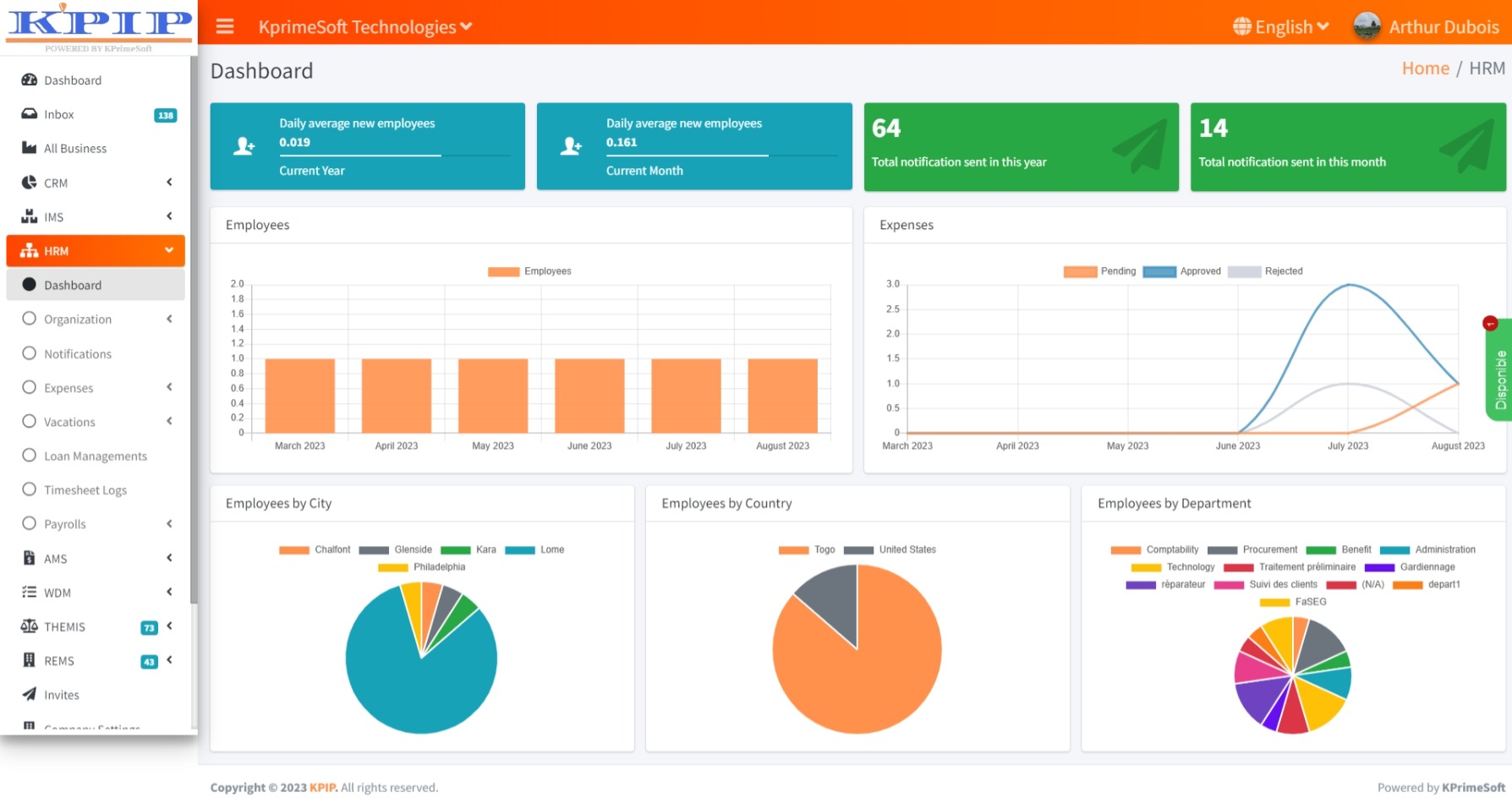
D - AMS
Accounting Management: The AMS module equips users to effectively manage their financial activities, calculate cash flows, and transparently assess transactional losses, all within an integrated environment. Similar to other modules within KPIP, an innovative dashboard is at your disposal, providing a comprehensive overview of trends and aiding in making well-timed decisions.
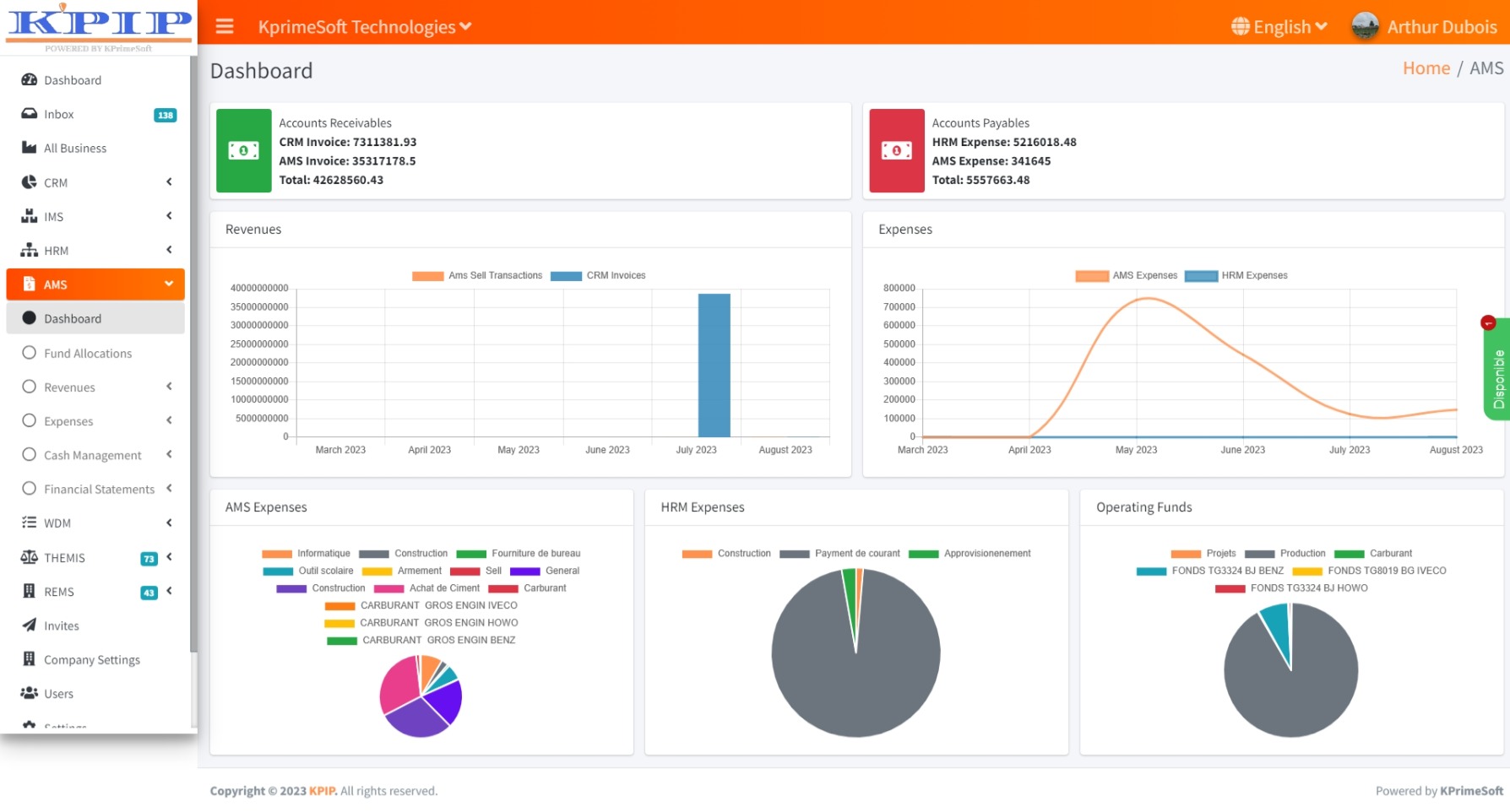
G - WDM
Work Distribution Management: The WDM module enables users to effectively manage and distribute tasks. The use of Gantt chart visualization tools enhances teamwork, collaboration, transparency, and project planning. Through this module, tasks can be efficiently assigned to staff members, projects can be planned, and deadlines can be set. Employees can also assign tasks to themselves and monitor their assigned tasks within their queue, including updates on progress. With the WDM system, it becomes easy to keep track of completed tasks and projects in progress. While staff members will provide their assessments online, an internal algorithm will also gauge the actual status of the assigned work or projects. This enables you to assess your employees' progress and provide prompt feedback based on their input. Notifications or comments related to new tasks assigned to you are sent by WDM. Additionally, alerts are generated when tasks or projects face delays, allowing for swift action to get things back on track. The system also evaluates and rates employees' work performance, facilitating insights into individual performance and providing room for necessary improvements.
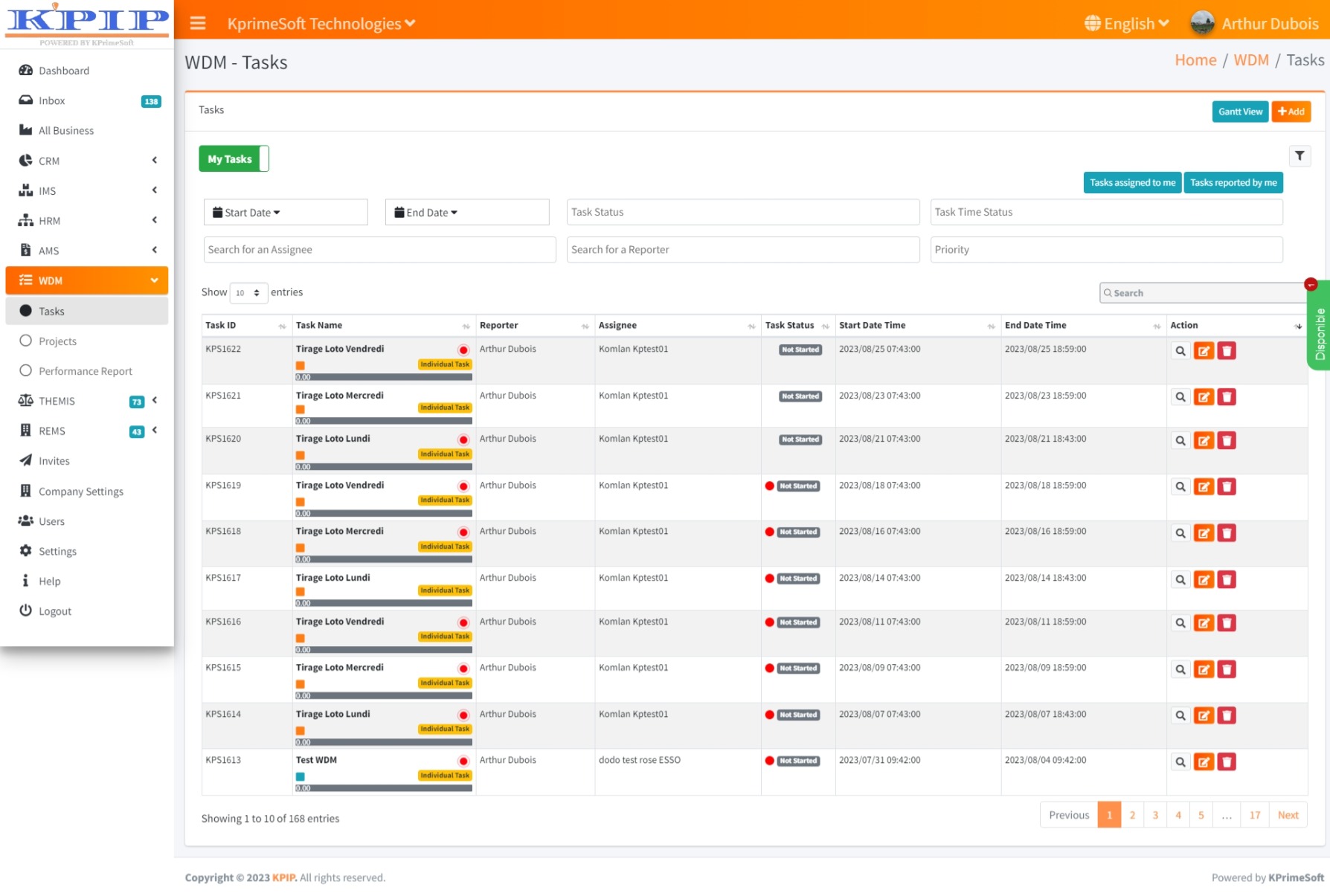
E- THEMIS
Court File Management: The THEMIS module offers a user-friendly platform to coordinate and manage various activities associated with court cases. This includes the addition of new clients, creation of case topics, and more. THEMIS stands out for its intuitive, dynamic, and interactive design. Progress tracking and seamless communication with relevant parties are made possible. The module supports electronic invoicing, enabling the sending of invoices to clients via email or SMS, with notifications on actions taken. Diverse payment options, including credit card and PayPal, are available for customer convenience. Customizable templates can be created to suit specific needs, ensuring efficient reuse and saving time and resources. The dashboard offers an overview of organizational performance, presenting critical information that can be accessed anytime and anywhere.
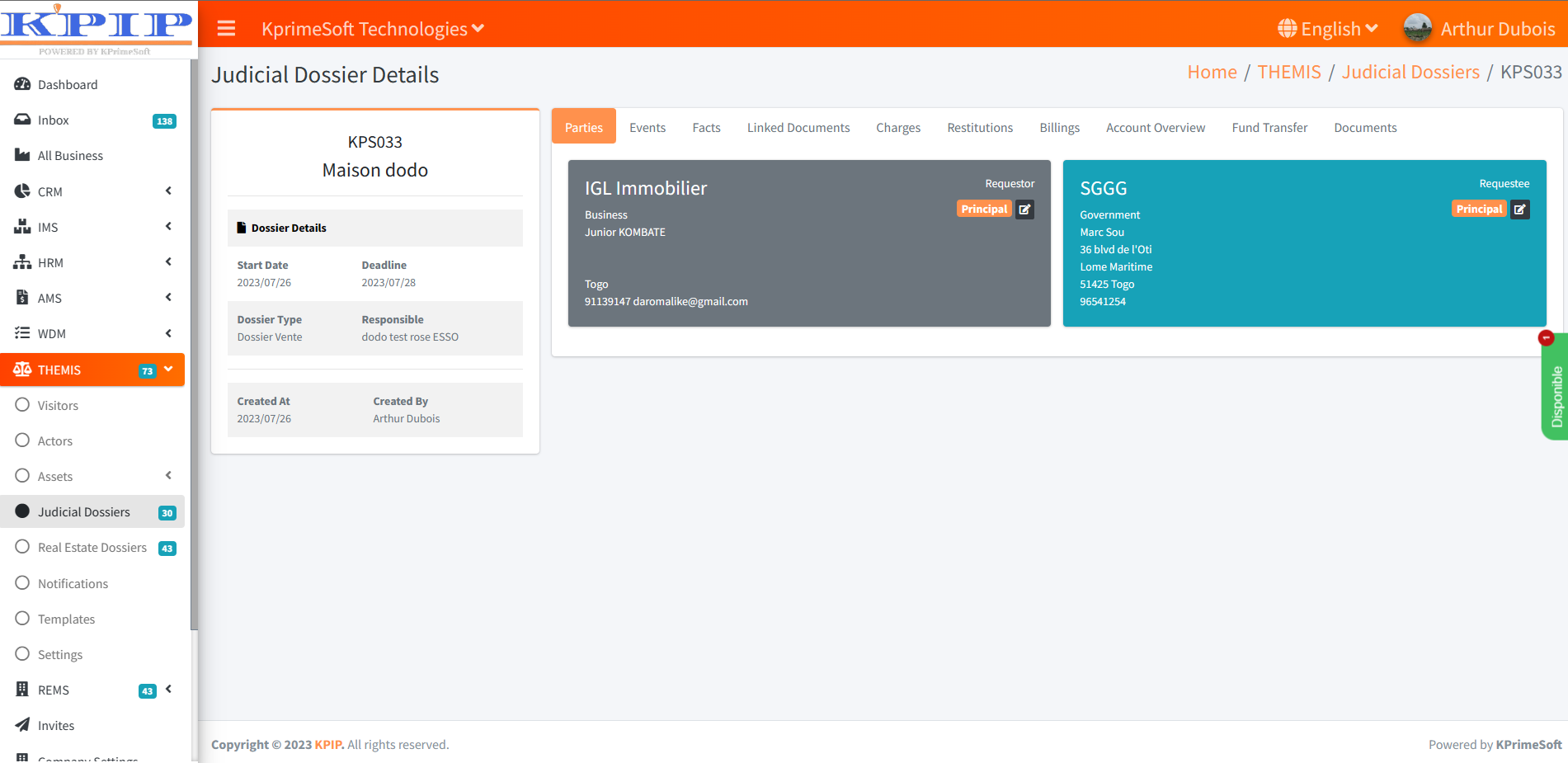
F- ReMS
Real Estate Management: The ReMS module facilitates the comfortable management of real estate records. It simplifies interactive communication with customers or tenants to address urgent matters promptly. Clients will find it convenient that invoices can be delivered electronically through email. Multiple online payment options are also provided to enhance convenience. The interactive and dynamic dashboard empowers users to monitor crucial information concerning daily operations, enabling swift responses when necessary.
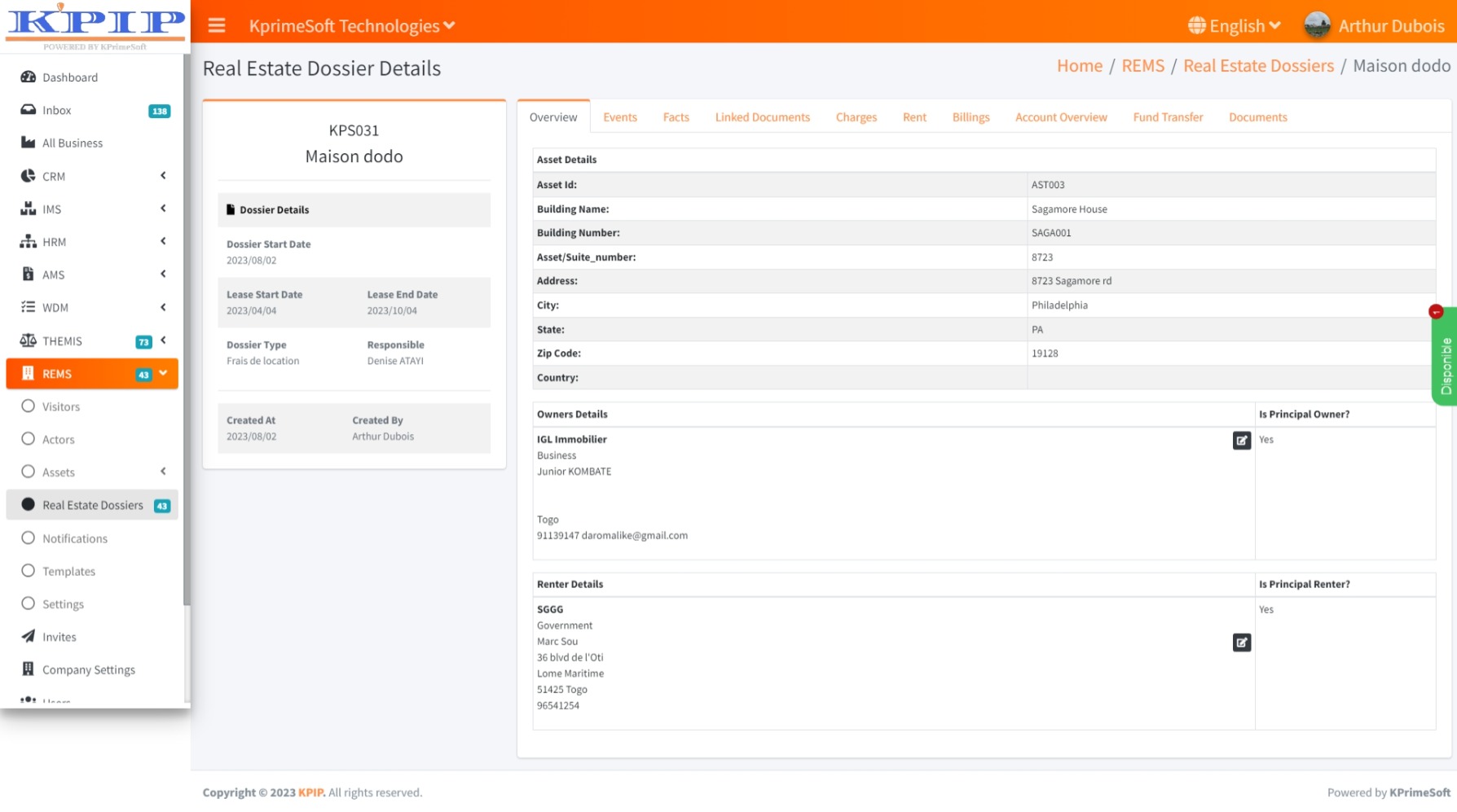
A- HRM Payroll
Paystub Access Capability: This functionality enables users to access their paystubs.
The management of salaries and paystubs is a critical aspect of any organization. Only a select group of employees should have the ability to manage paystubs.
This feature grants authorized users the ability to access paystubs and perform all associated actions.
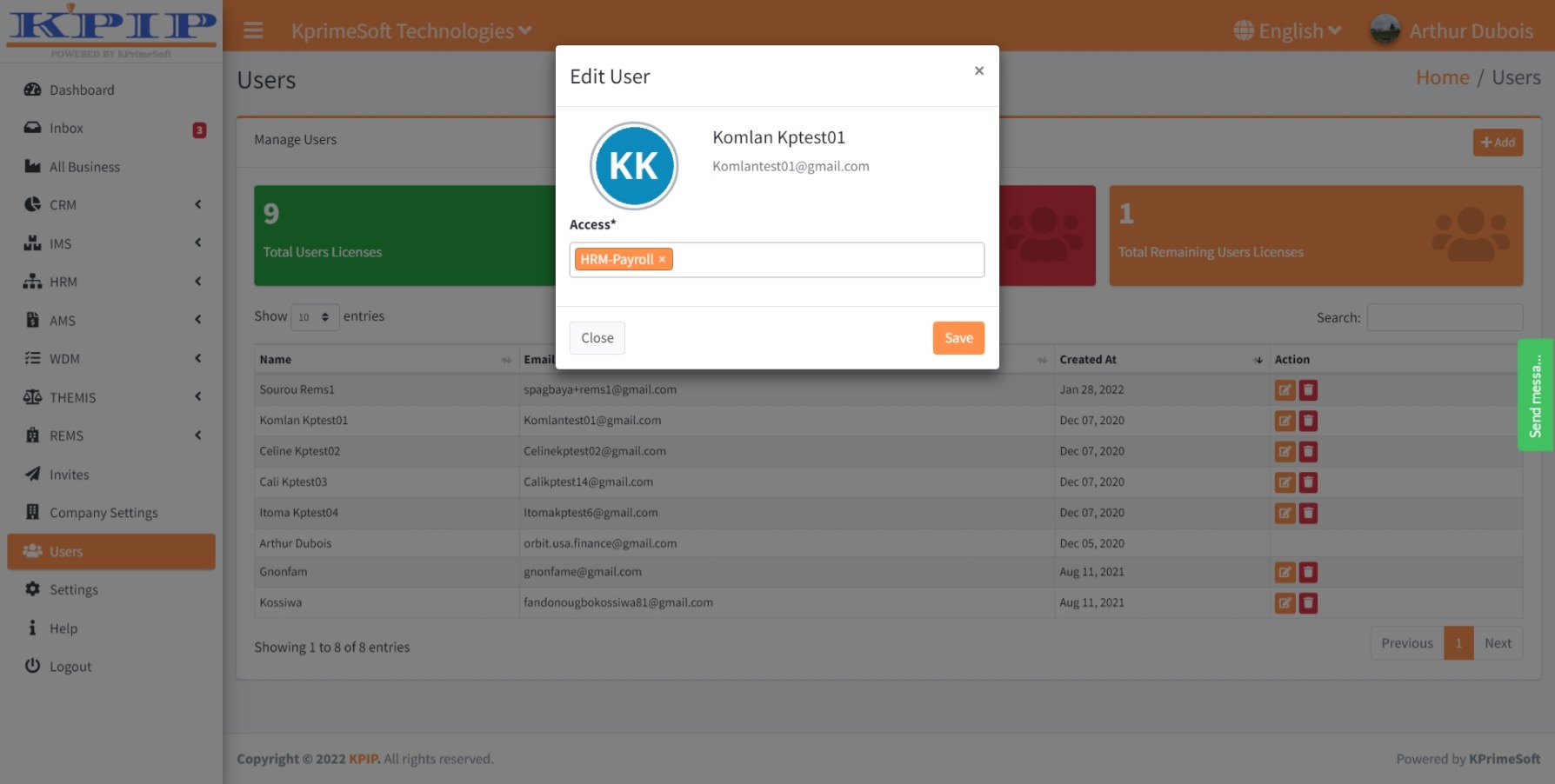
B - Add Expenses transaction
Expense Transaction Integration: This feature allows users to incorporate expense transactions into the system.
Integrating, tracking, and tracing expense transactions are essential for proper fund management within an organization.
This capability empowers users to integrate expense transactions and perform all relevant actions.
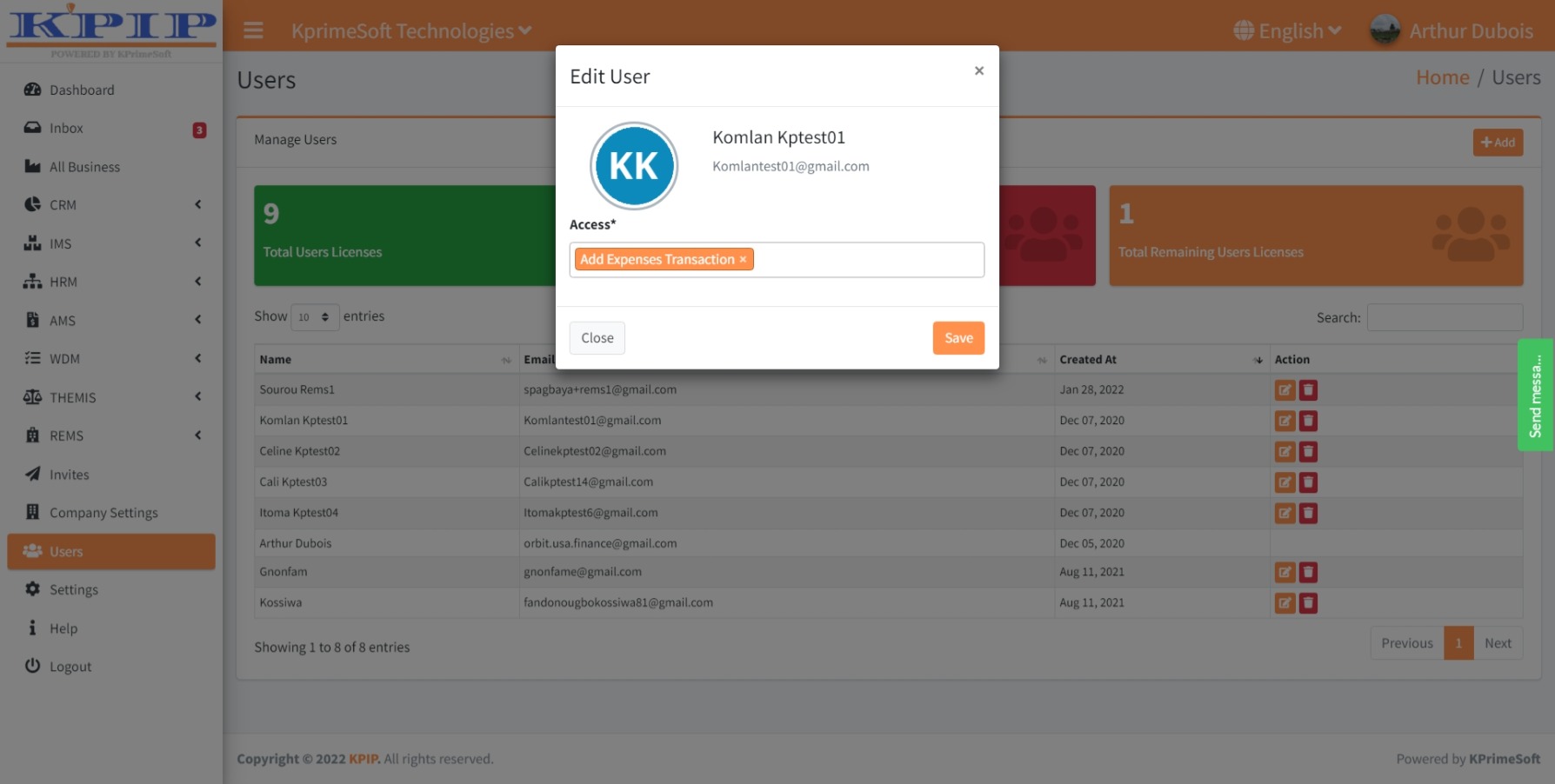
C- View Cash-on-hand Balance
Cash Balance Viewing: This functionality permits users to view the company's available cash balance.
Regularly monitoring the company's cash balance is vital to avoid unexpected fund shortages when expenses arise. Limited staff members should have access to view the cash balance.
This feature provides the ability to view the company's cash balance.
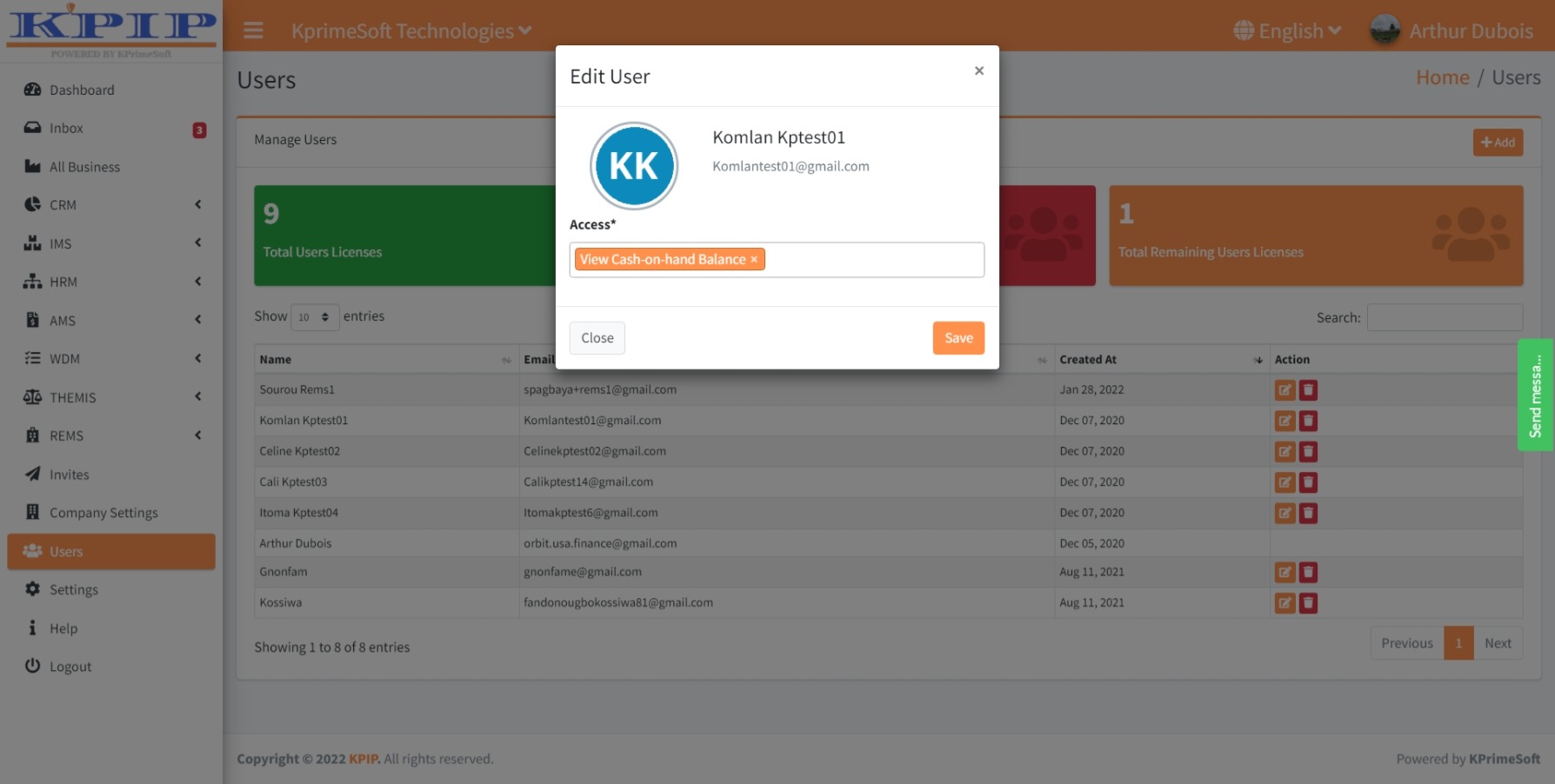
D - HRM-no-edit
Restricted Employee Information Viewing: This functionality allows users to access employee information for viewing purposes only, without the ability to make changes.
Maintaining knowledge of employee details is crucial for organizational needs. However, not all users should be allowed to modify this sensitive information. Only authorized Human Resources personnel should have this privilege.
This feature prevents unauthorized personnel from editing employee information while still enabling them to view it.
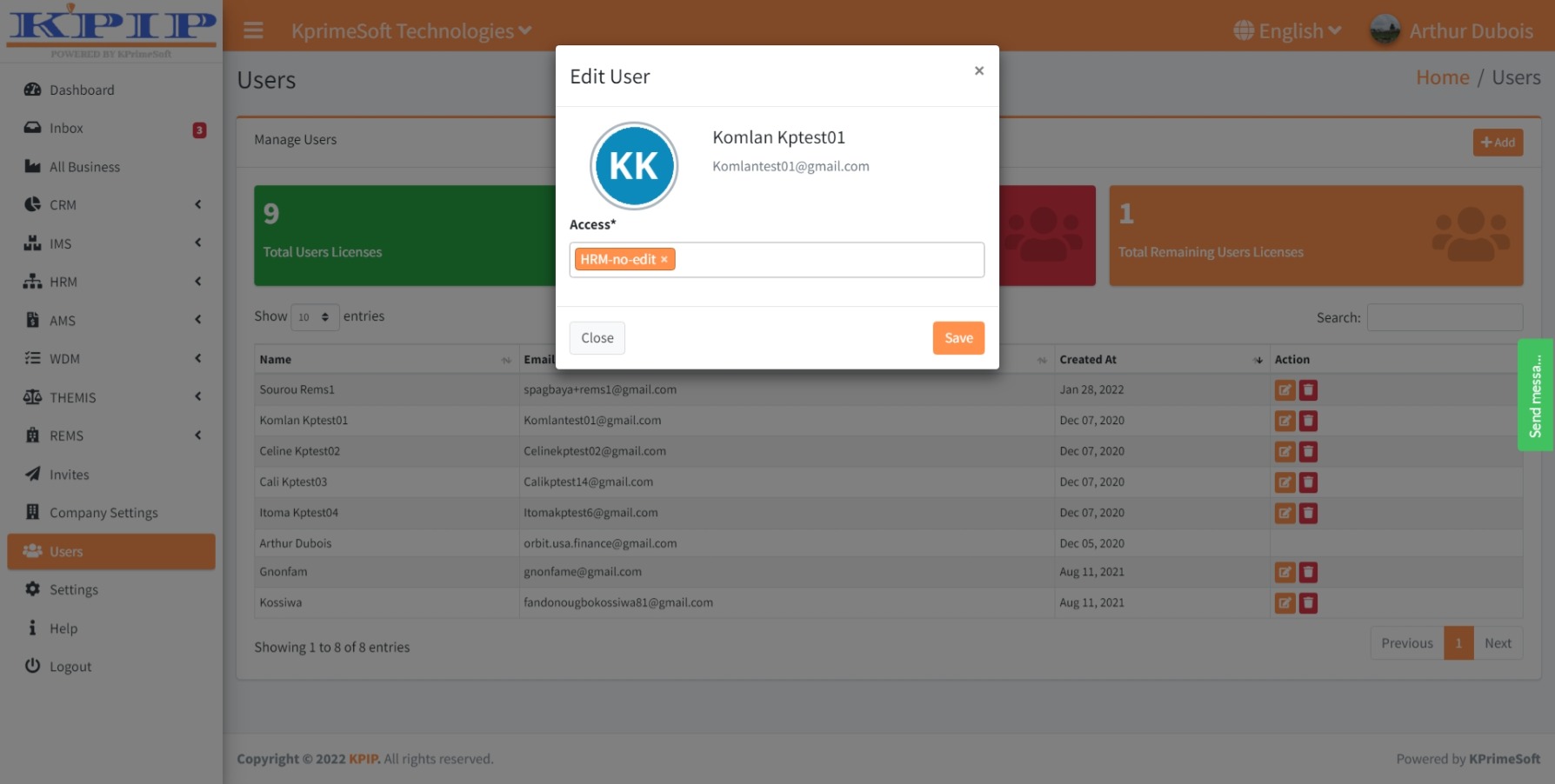
E - All-Clients-Data-Access
Client Information Visualization: This feature enables users to view customer information associated with the company.
Safeguarding customer data and interactions helps prevent data leaks. This not only preserves customer trust but also maintains strong relationships.
This capability empowers users to view customer information, interactions, and perform related tasks.
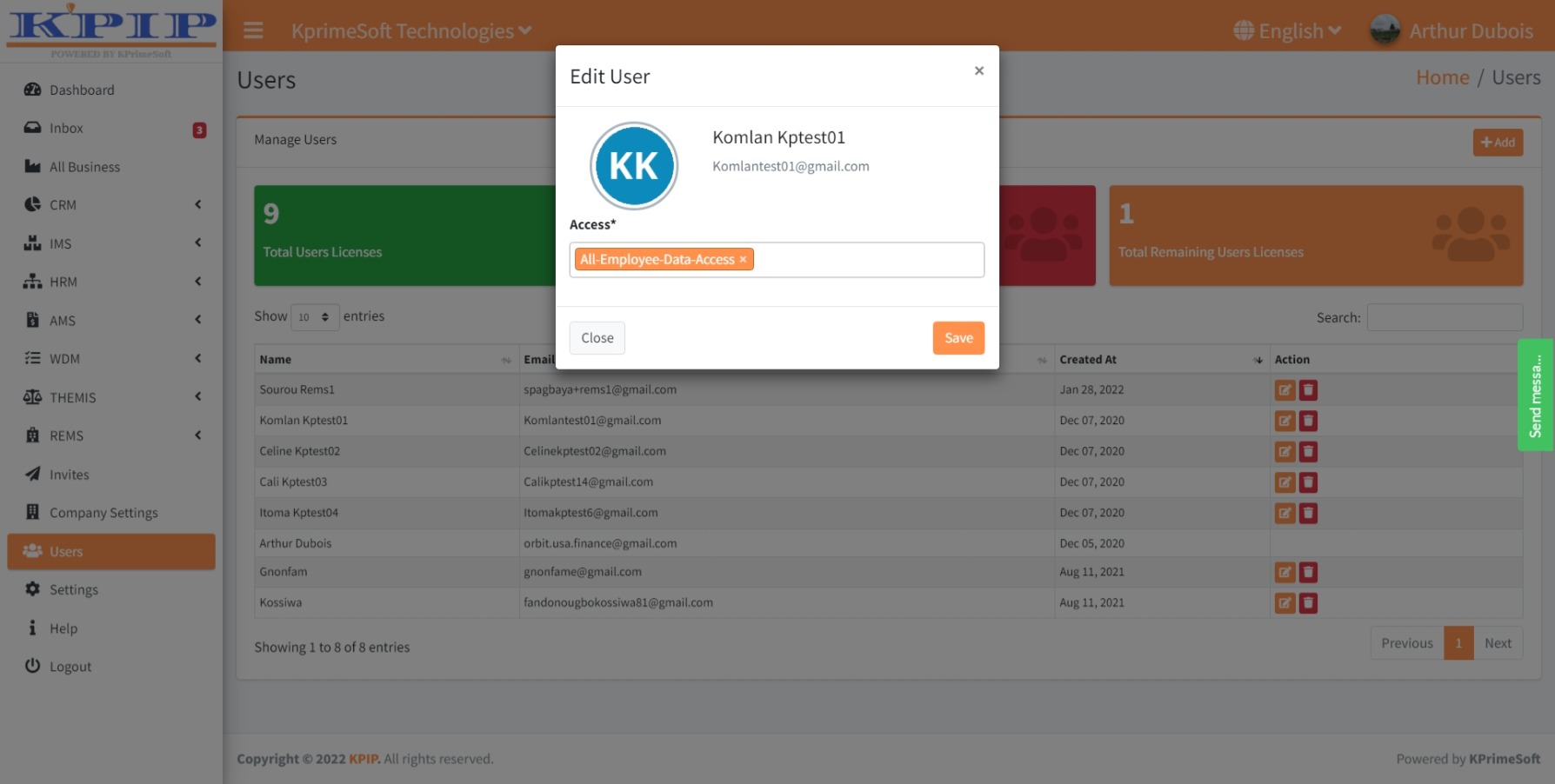
F- All-Employee-Data-Access
Employee Contact Information Retrieval: This functionality allows users to search for and use the contact details of fellow employees within the organization.
Protecting employee data is vital for effective human resources management. Therefore, this information should not be accessible to all users.
This feature provides authorized users with access to employee contact information and allows them to utilize it within the system.
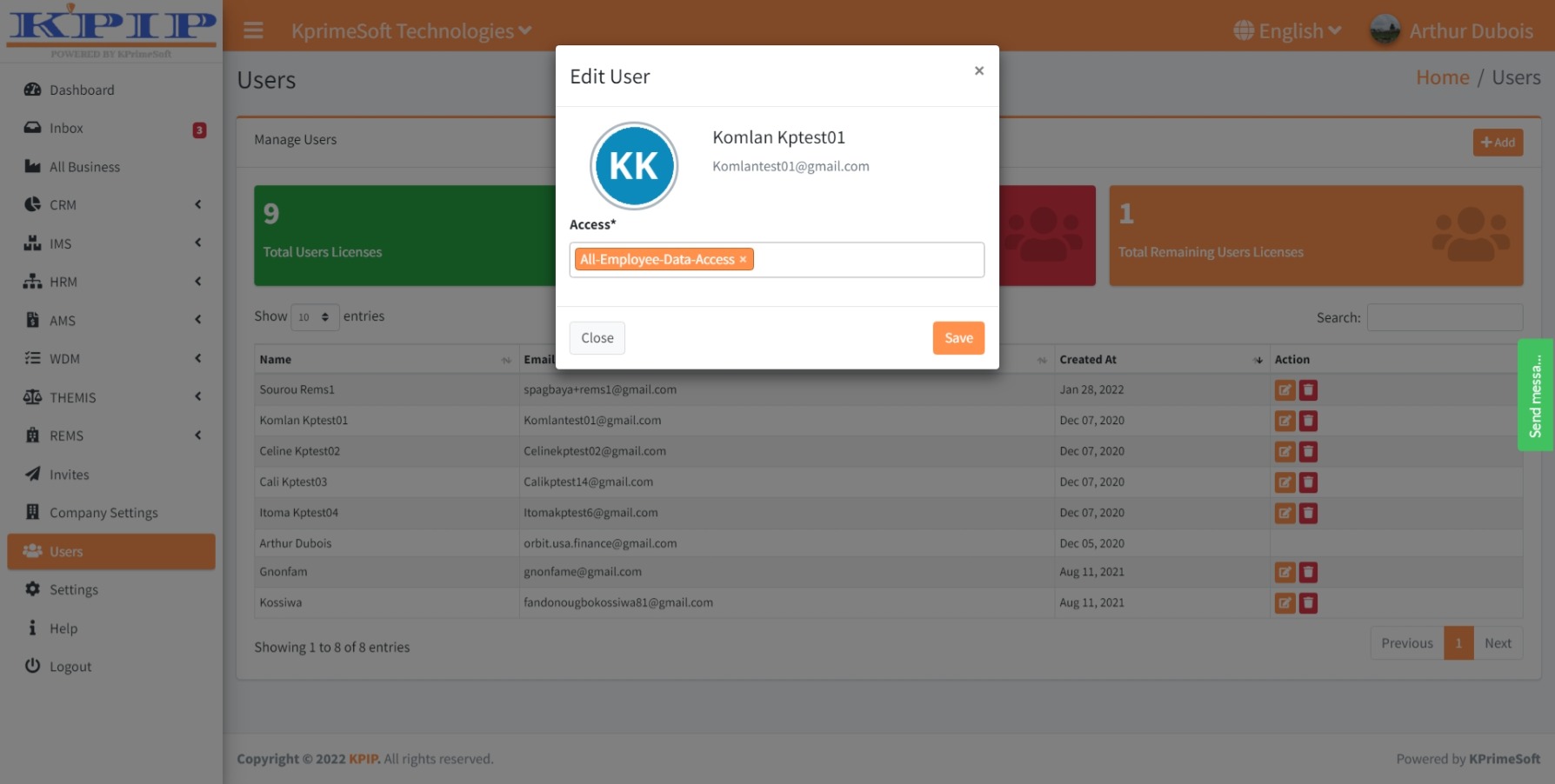
G- Admin
Secondary Administrator Privileges: This feature enables a user to perform the same functions as the primary KPIP administrator.
In situations where the main KPIP administrator is unavailable during emergencies, granting the same roles and access to another user can ensure critical actions can be taken promptly.
This capability empowers a designated user to possess the same roles and access as the primary KPIP administrator.
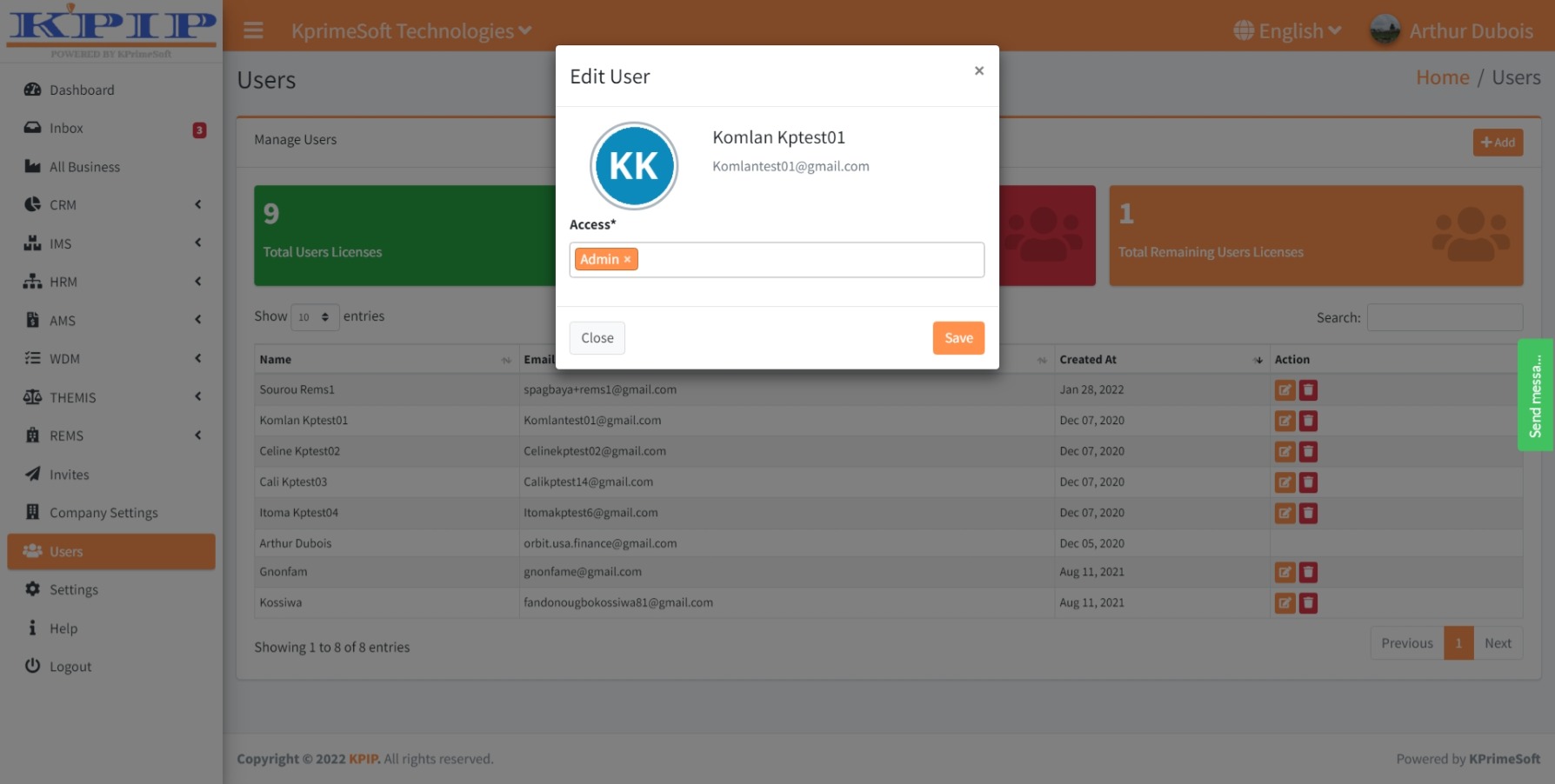
H- ParentCompanyLevel-access
Sub-Unit Access within Parent Company: This functionality allows a user, through a unique KPIP workspace, to access financial statements at both the company and business unit levels.
Managers or administrators within the company must have comprehensive insights into the financial status of their units. This global perspective enhances accuracy in assessing the company's overall financial health.
This feature provides users with the authority to access financial statements at both the company and individual business unit levels within the parent company.
.
